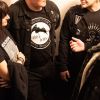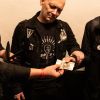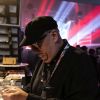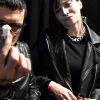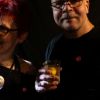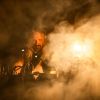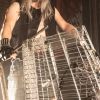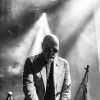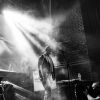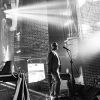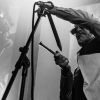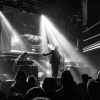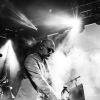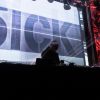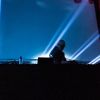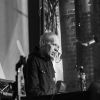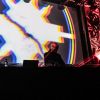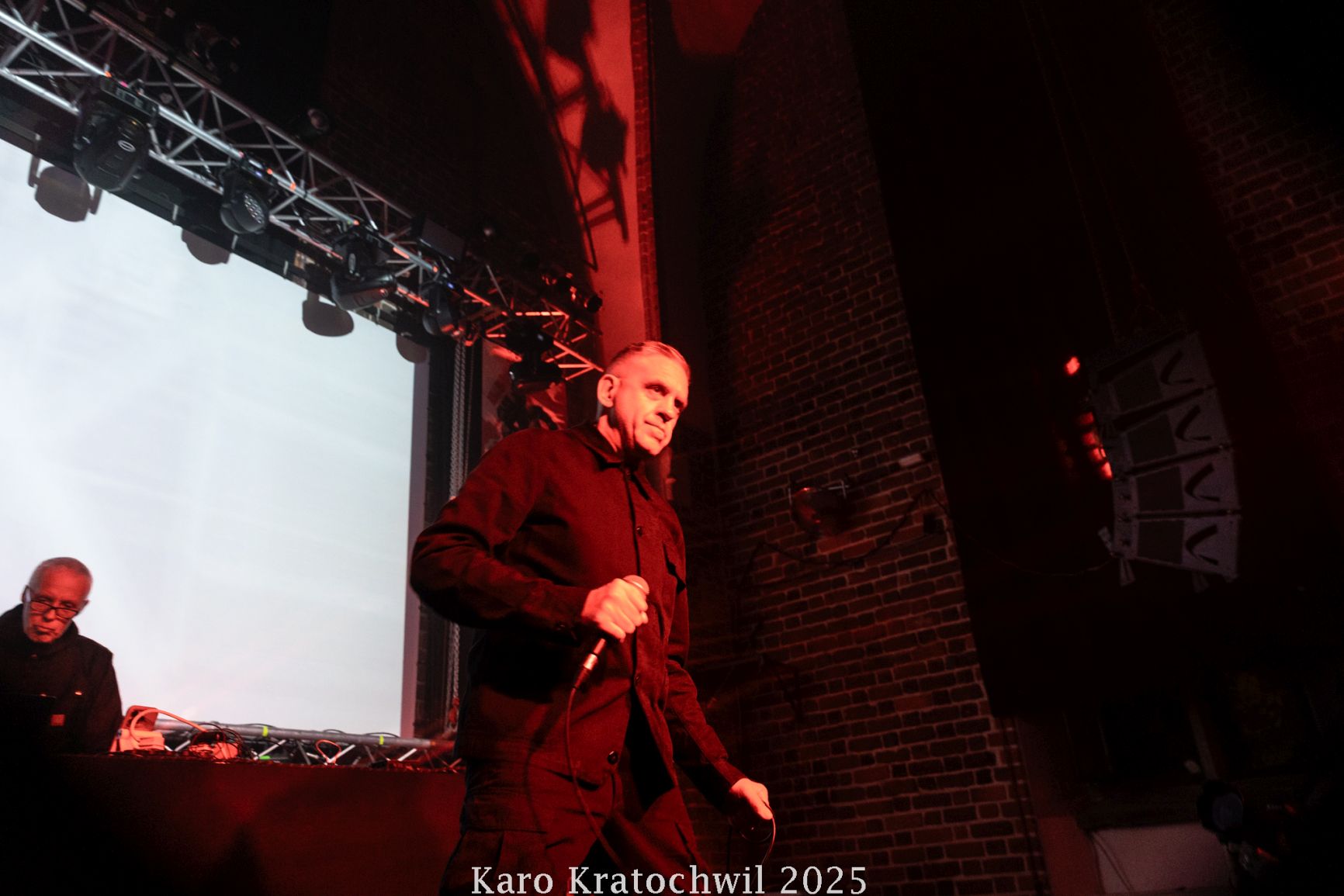 DCF Cinema & Gothic Hall, Wroclaw, Poland
DCF Cinema & Gothic Hall, Wroclaw, Poland16th to 19th October 2025
XXIV Wroclaw Industrial Festival 2025 Day 2 with Shantidas, Alos, Schloss Tegal, Thorofon, Portion Control
Friday traced a line from absurd theatre to full-scale sonic assault. SHANTIDAS, tethered to his shopping trolley, staged a fierce, uneasy dialogue with consumer culture, turning everyday objects into abrasive instruments and the hall into a collapsing supermarket of feedback and distortion.
With ALOS, the tone shifted inward. Stefania Pedretti crossed the stage like an apparition, blending bells, symbolic objects and extended voice into something between a ceremony and an experiment in presence. It was music stripped to gesture, breath and intention - fragile, yet overwhelming.
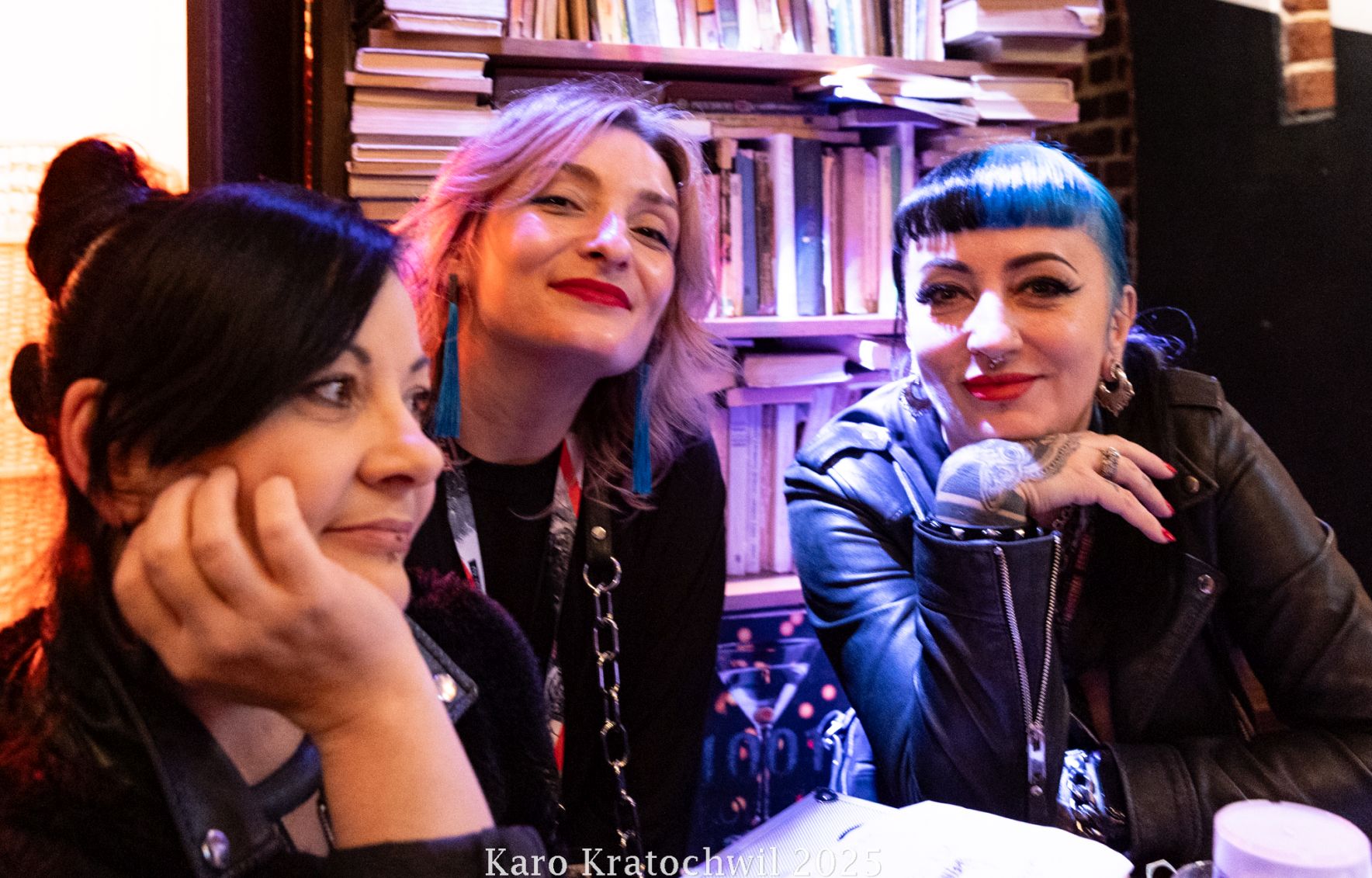
Later, THOROFON and PORTION CONTROL claimed the Gothic Hall with two very different but equally commanding visions of power. THOROFON once again proved how elegant industrial can be: sharp silhouettes, disciplined movement and a sound that married harsh textures with infectious, almost Pop-like hooks. PORTION CONTROL followed with a lesson in history that felt anything but archival - lean, physical and brutally efficient, their set connected early EBM DNA to the present moment with surgical force.
Shantidas
French musician and performer, also guitarist of Aluk Todolo, SHANTIDAS returns with his project Requiem pour un Caddie. Anchored to a supermarket trolley, he turns objects into instruments and sound into confrontation. On a path spanning drone, noise, and experimental performance art, SHANTIDAS crafts dystopian soundscapes that challenge the very circuitry of commodity and audience alike. His work reshapes found objects into sonic weapons and invites us into ritualised reflection.
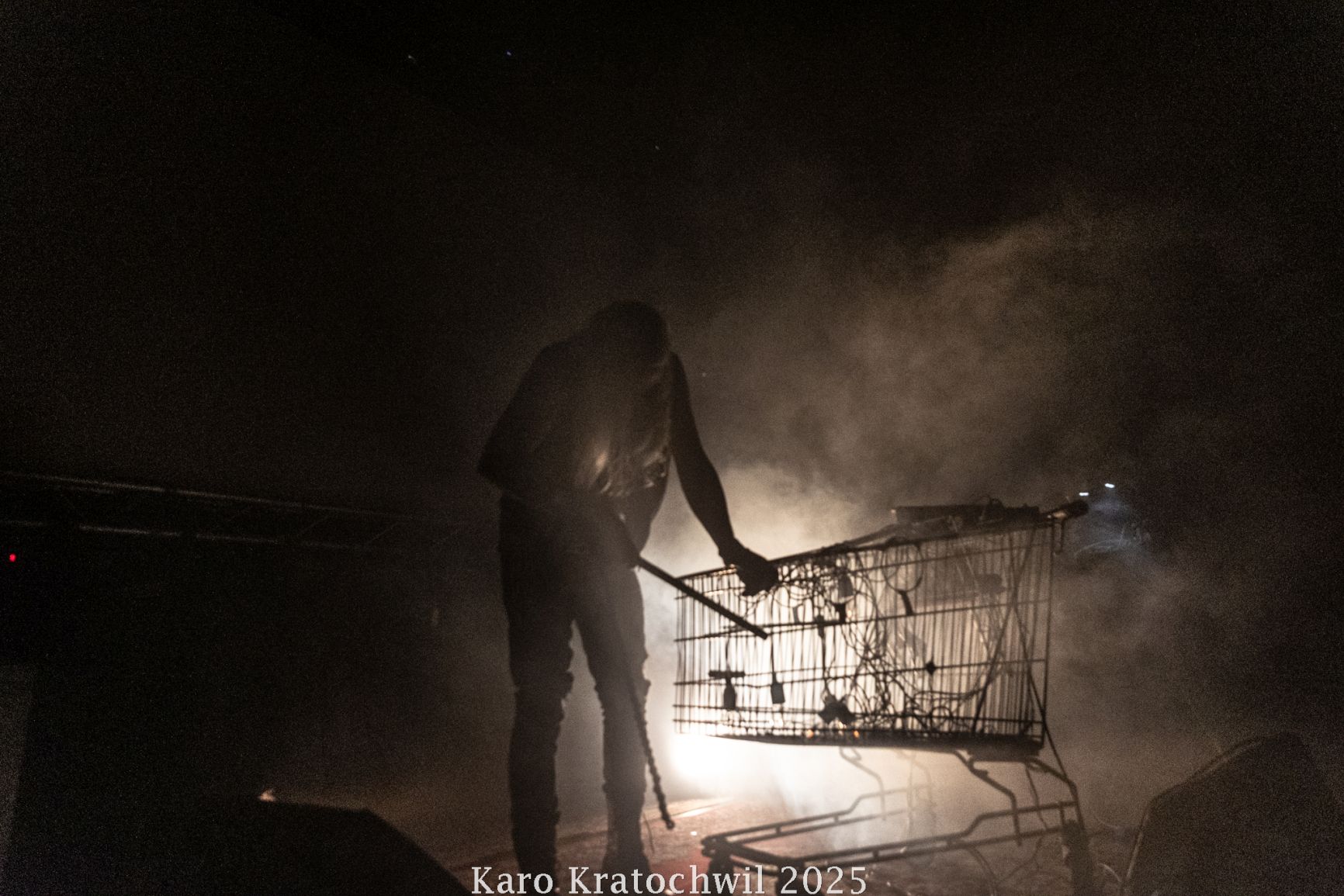
Music & Performance
The stage lights dimmed, a solitary shopping trolley creaked into position, and SHANTIDAS began his ritual. Bound to the cart as though chained to the symbol of consumerist motion, he wielded sound as weapon. From the first metallic clang through ominous low rumbles of drone, the performance unfolded as an absurdist duel: man versus machine, object versus meaning, noise versus narrative.
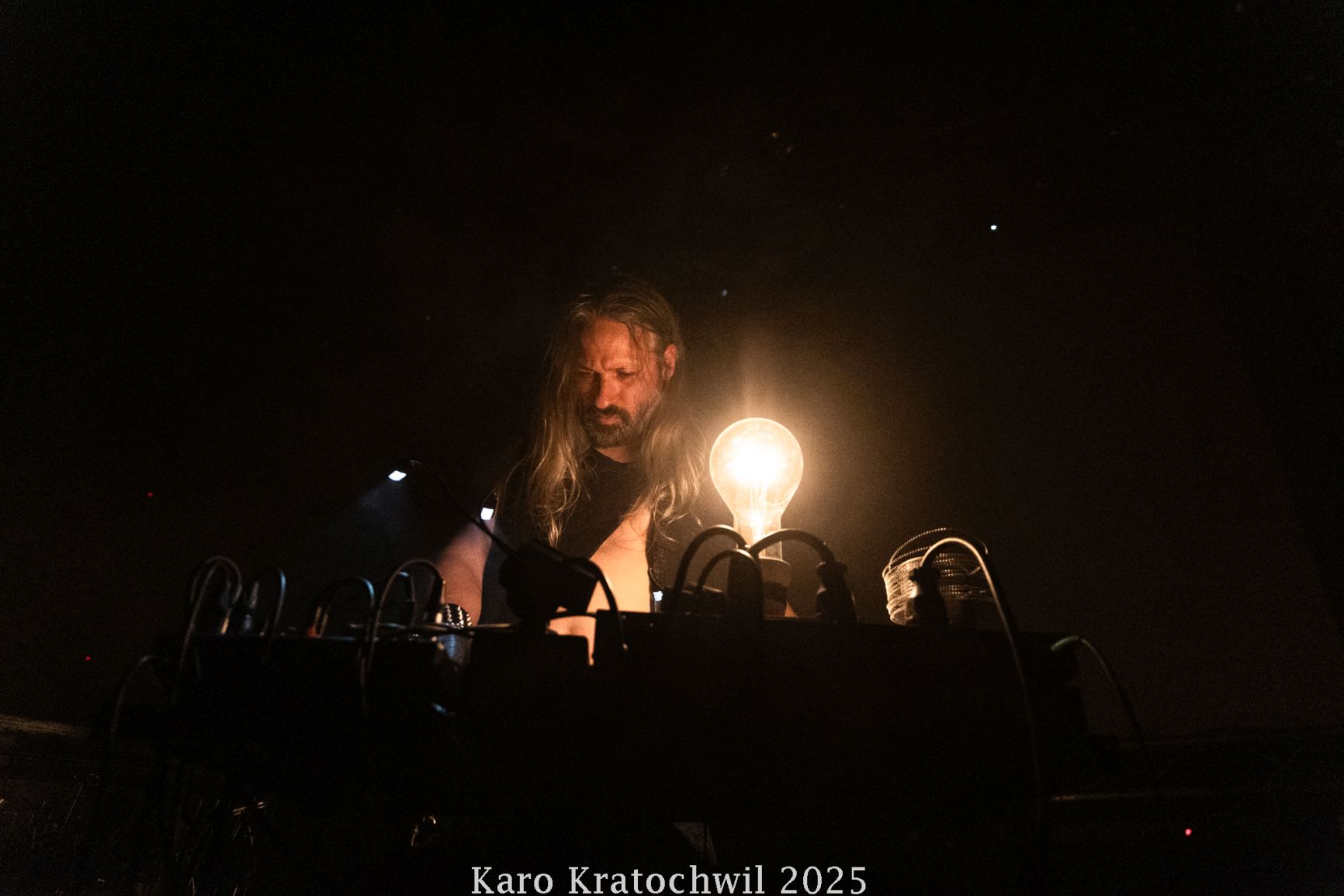
What started as confrontation soon metastasised into symphony - the trolley’s wheels turned into percussion, its frame a resonator, field recordings and digital manipulation forming a dystopian landscape of commerce and collapse. Light flickered across the hall, shadows cast by props and performer merging into visual static; one moment the audience was spectator, the next complicit in the spectacle. It was more than sound - this was theatre of industrial decay, where the death of capitalism was scored in distortion and echo.

The set didn’t end with applause, but with the lingering hum of steel and the sense that we had witnessed an experiment in ritual and resistance. SHANTIDAS proved that the shopping cart can be instrument, symbol and adversary, and that noise remains one of the few languages left to speak of collapse with dignity.
Alos
ALOS is the solo project of Italian performer and sound artist Stefania Pedretti (OvO). Her work fuses ritualistic performance, experimental voice, and symbolic objects into an exploration of power, gender, and transcendence. Mixing drone, noise, and physical gesture, ALOS creates immersive experiences that dissolve the boundaries between body, sound, and spirit - turning every performance into a transformative rite.

Music & Performance
There was a moment, just before it began, when the room seemed to inhale. Then came Stefania Pedretti, not walking on stage, but arriving, as though crossing an unseen threshold. With ALOS, her long-evolving solo project, she doesn’t simply create music - she creates presence.

It felt like entering a space between elements: sound and silence, flesh and spirit, chaos and devotion. She used her body as an instrument, not metaphorically but literally: every motion carrying resonance, every gesture sculpting air into vibration. Bells trembled like distant memories, chalices and crystals shimmered in her hands, loops emerged and dissolved. The performance existed somewhere between music and alchemy.

ALOS has always been more than a name. It’s a living form that breathes through noise, rhythm, and emotion. You could sense the echoes of her years with OvO - that fearless confrontation with raw sound - but here it felt transmuted, inward, stripped to its essence. The power didn’t come from volume but from tension, from the way her silence pressed against your skin.
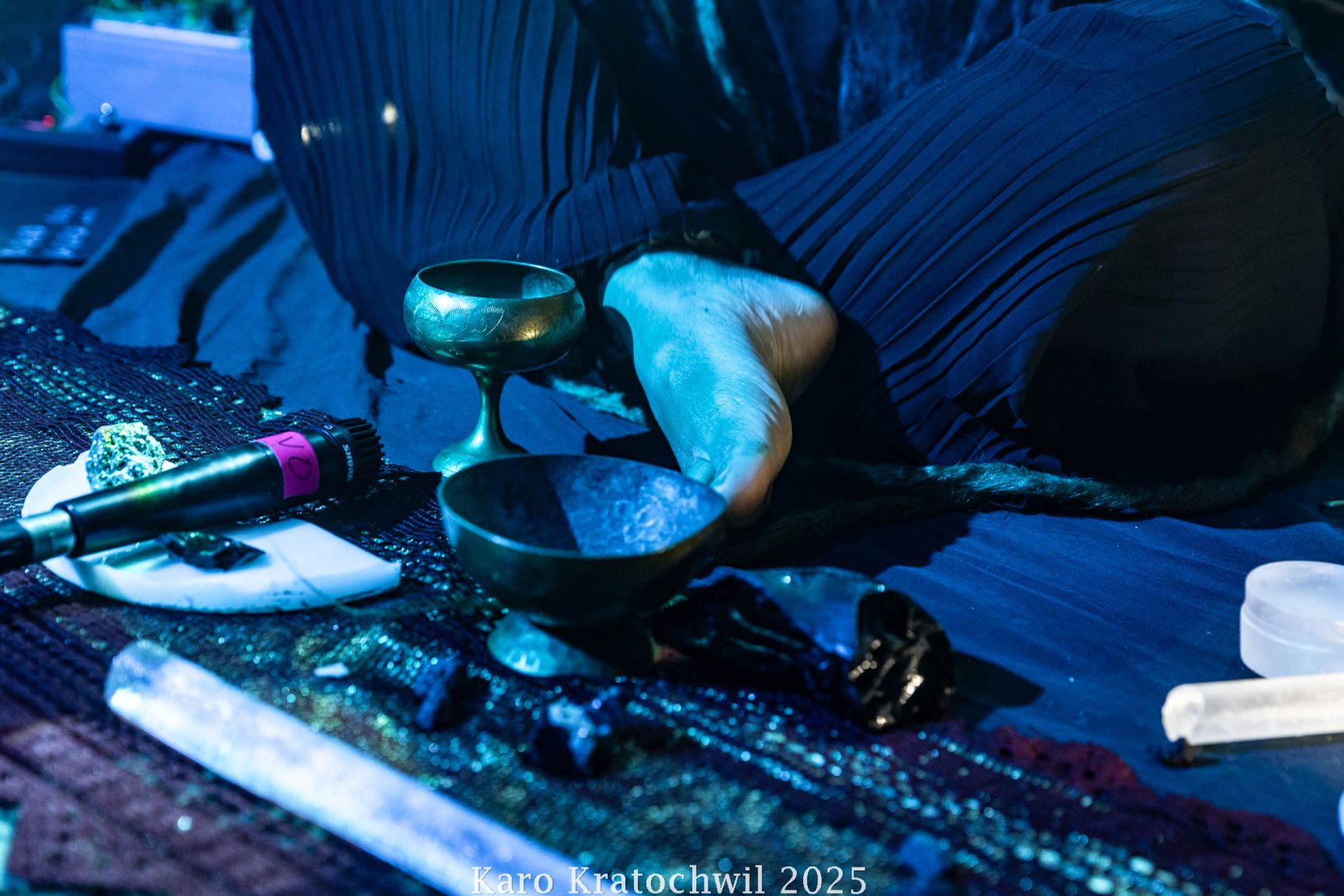
At times, it was like watching a secret being born. The sound expanded and contracted, circling around her voice, a voice that shifted from whisper to invocation, from vulnerability to defiance. It wasn’t a linear concert; it was a process - something unfolding in its own time, refusing to be rushed or explained.

The Gothic Hall became a vessel. Light and shadow moved with her, and the air grew heavy with concentration. The audience stood perfectly still, caught in a strange quiet that felt like reverence. ALOS offered no comfort and no clear answers - only intensity, transformation, and the sense that art can still surprise, even after decades of knowing what “avant-garde” is supposed to mean.
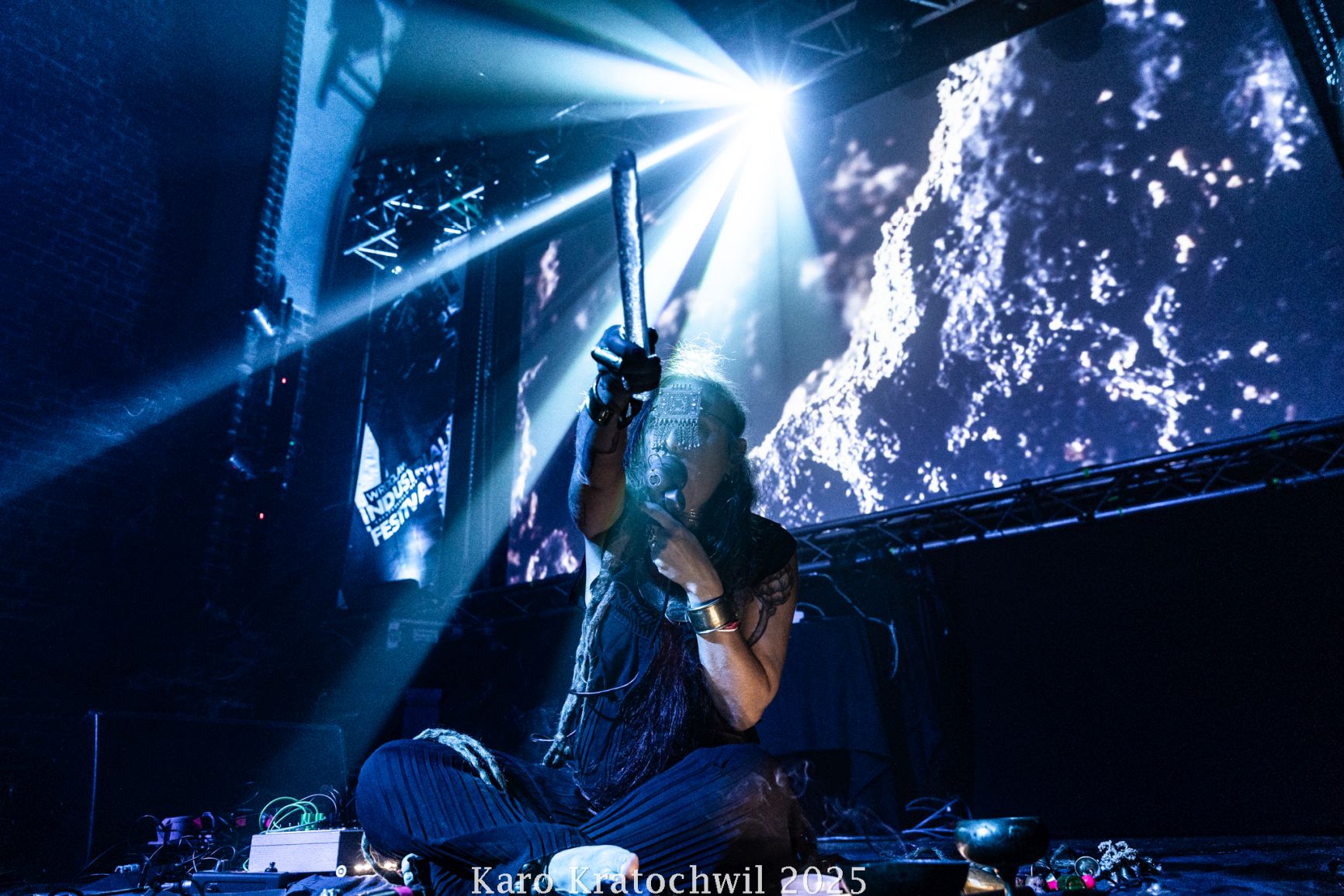
When the last sound faded, it wasn’t applause that filled the room, but an afterglow - that peculiar silence that follows when something real has happened. That night, Stefania Pedretti inhabited something ancient and alive, and for a fleeting hour, we were allowed inside.
Schloss Tegal
Founded by Richard Schneider, SCHLOSS TEGAL stands among the most influential projects of the American Dark Ambient and Industrial avant-garde. His work delivers an extreme, intoxicating dose of psychological hallucination - a sound architecture built from noise walls, subliminal frequencies, and fractured imagery drawn from the deepest strata of the unconscious. Since the early 1990s, SCHLOSS TEGAL has cultivated a uniquely recognizable style, releasing a series of seminal works such as ‘Human Resource Exploitation’, ‘The Grand Guignol’, and ‘Black Static Transmission’, all considered cornerstones of Post-Industrial sound art.

His compositions traverse forbidden territories - extraterrestrial phenomena, the pathology of serial killers, and the shadowed recesses of the human psyche - transforming them into immersive sonic experiments. The structure of his music, dominated by low-frequency drones and intricate collages, carries a distinct psychoactive dimension: each layer feels like an altered state, an entry point into sound as psychological archaeology. Every live performance becomes an act of exploration and confrontation - a process that dissolves the line between the mind’s internal landscape and the external world.
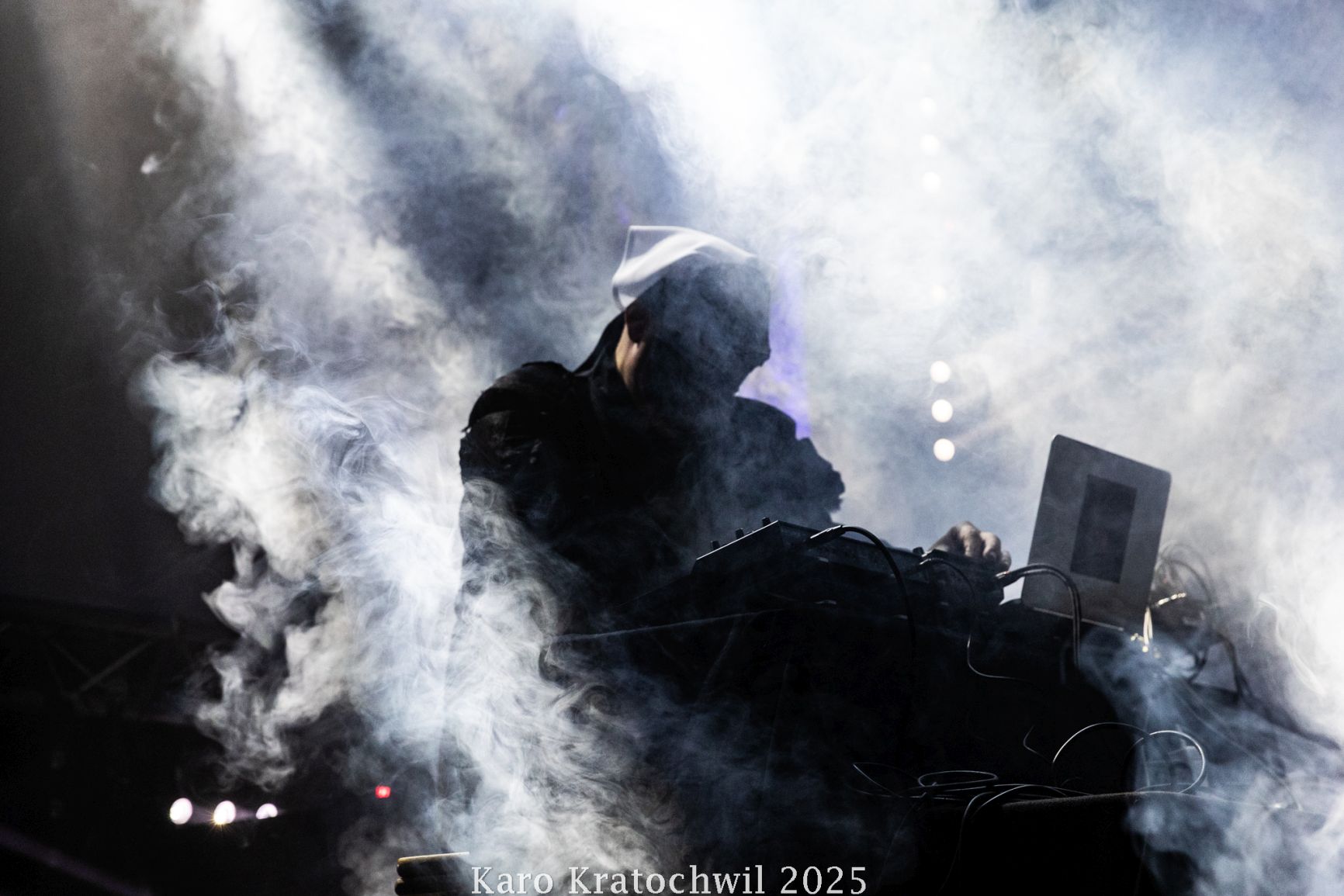
Music & Performance
I had witnessed Richard Schneider perform earlier this year at the Audiotrauma Festival - a performance that already felt like crossing a threshold. Yet his appearance at the XXIV Wroclaw Industrial Festival went even further. What unfolded on stage was not a concert in any conventional sense, but a séance of frequencies and memory. Schneider approached the stage with minimalist intent: a table of devices, flickering LEDs, and a screen of abstract, flickering visuals that resembled brainwave interference.

From the first vibration, the room seemed to contract; the bass frequencies crawled across the floor like a slow chemical reaction. What followed was pure improvisation - sound as instinct, intuition, and danger. Each modulation felt like an excavation, unearthing fragments of voices, distorted whispers, field recordings of unknown origin, and the hum of invisible machines. The structure built and collapsed in waves, as if responding to unseen neurological patterns. The boundaries between rhythm and texture dissolved; what remained was immersion.
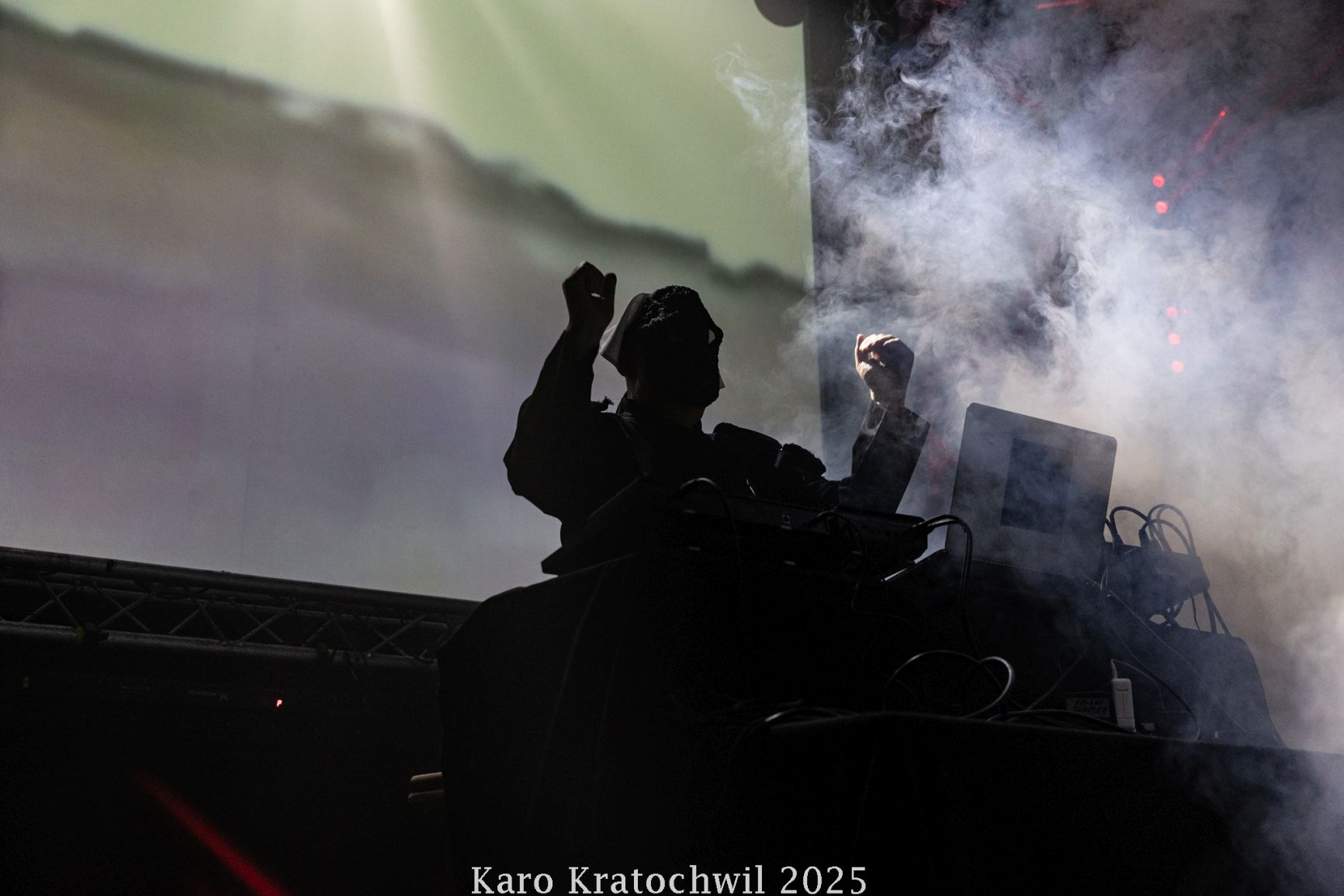
It was less about performance and more about possession - the sound possessing the space, the audience, and even the performer himself. The hall became an echo chamber of collective subconsciousness. You could almost feel the temperature drop when high frequencies cut through the droning mass like electric scalpels. There was no climax, only reconfiguration.
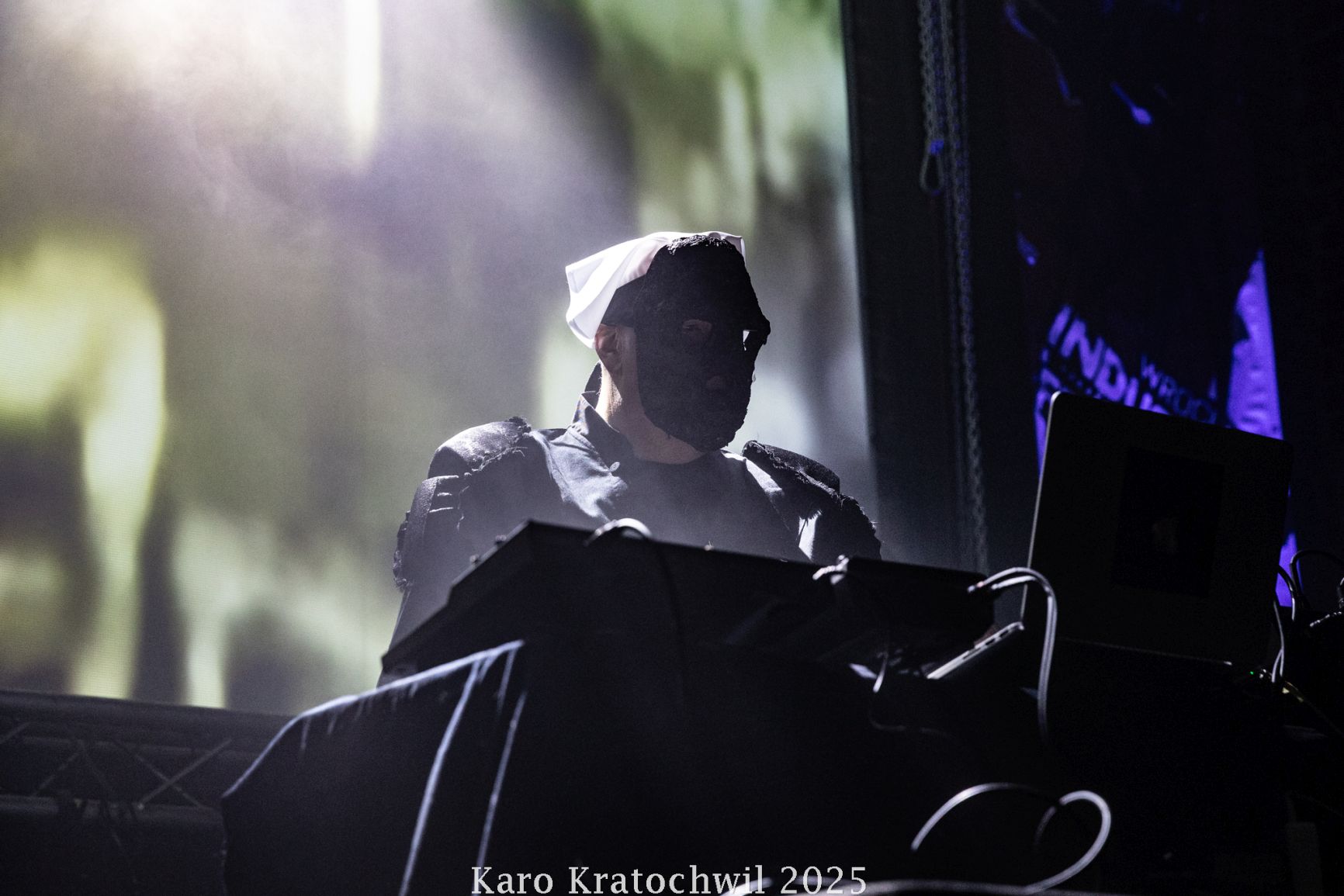
The piece evolved from density to near-silence, leaving behind a trembling resonance that lingered long after the final tone. It felt like a process of purification, of burning through layers of noise until nothing but raw perception remained. Richard Schneider once again proved that Schloss Tegal is not a band but a state of mind - a rare, unsettling intersection of psychology, sound, and symbolism.
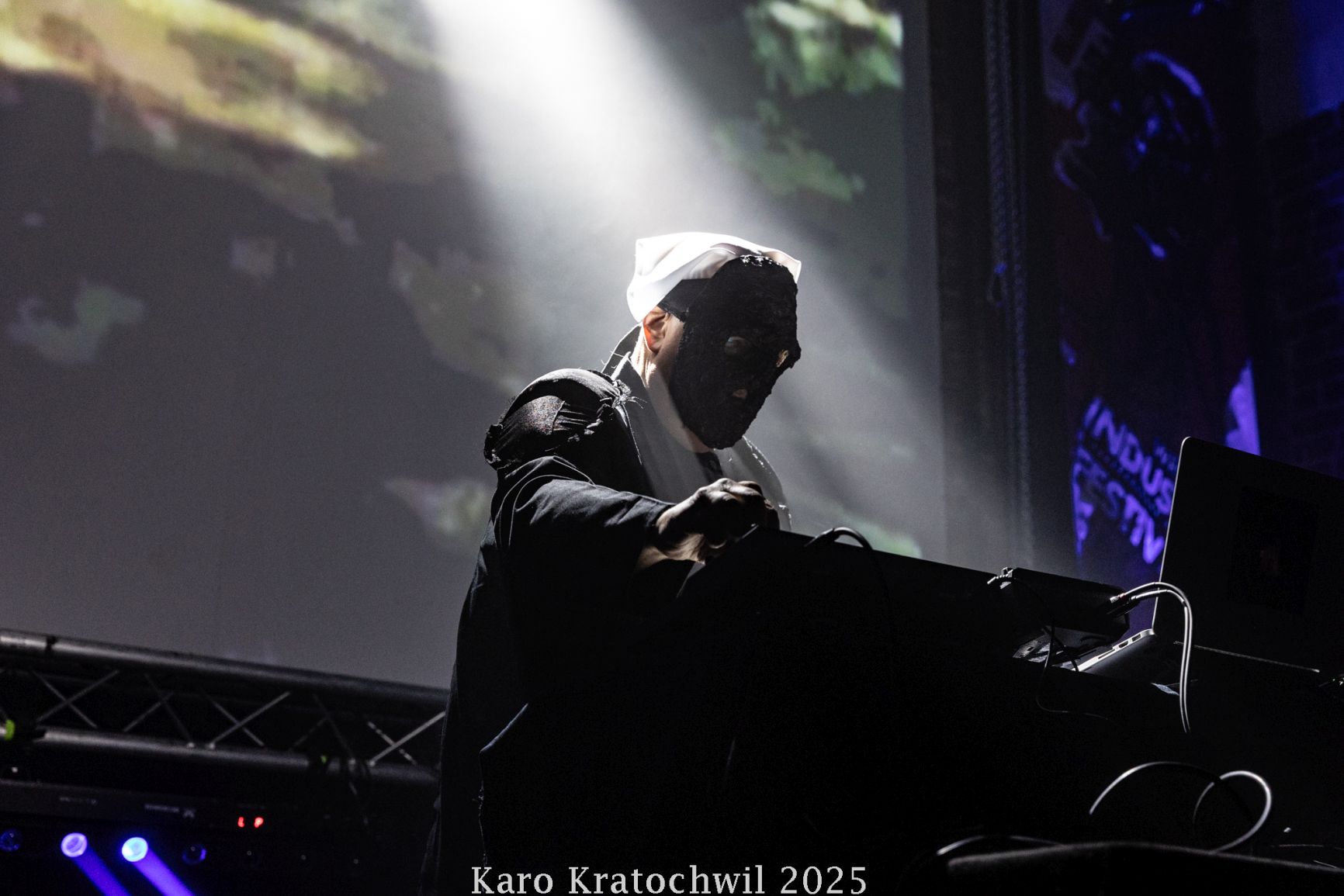
Thorofon
Founded by Anton Knilpert (a.k.a. Dan Courtman) and Geneviève Pasquier in the late 1990s, THOROFON are among Germany’s most distinctive Industrial projects. Fusing Power Electronics, Rhythmic Noise, and Cold Wave sensibility, they create a sound both cerebral and visceral. Elegant restraint meets relentless energy - an aesthetic of discipline and rebellion. Their live performances are renowned for precision, magnetism, and uncompromising style.

Music & Performance
There are artists you admire, and then there are those who shape your inner landscape. THOROFON have been among my long-standing favourites for years, and every time I see them live, I’m reminded why. Their performance at this year’s WIF was a blast, a controlled detonation of style, intellect, and pure sonic electricity. What I’ve always loved about THOROFON is their paradoxical brilliance, the way they marry absolute elegance with raw experimentation.

On stage, they exude a kind of refined, almost aristocratic composure, dressed in sharp lines and minimal gestures, yet what unfolds through their machines and microphones feels like an uprising of sound itself. That tension - between aesthetic restraint and unrestrained energy - is the essence of their art .The set was a masterclass in balance: distorted sequences and abrasive textures met precision rhythms and hypnotic hooks. It was industrial stripped of clichés, rebuilt into something lean, sophisticated, and alive.
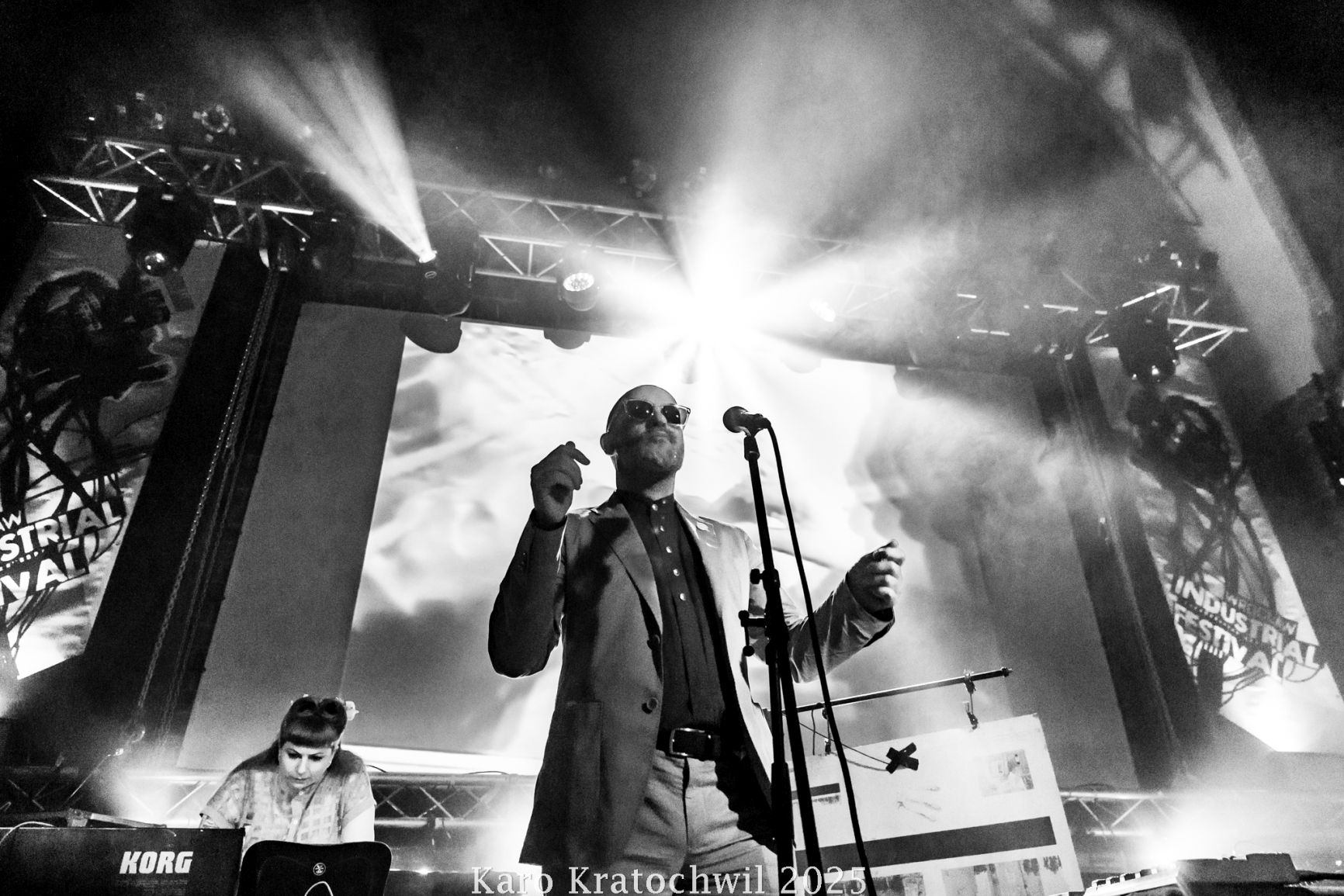
Every beat landed like a pulse, every vocal felt necessary. Their sound has that rare quality: it’s complex and experimental, yet fiercely catchy, infectious even. It punches through intellect straight into instinct. Visually, the show was all about contrast - minimal movement, maximum presence. The lighting sculpted their silhouettes into living fragments of machinery and flesh, amplifying the dialogue between control and chaos that defines their music. You could feel the audience caught in that magnetic field: eyes locked, bodies swaying, minds wide open.
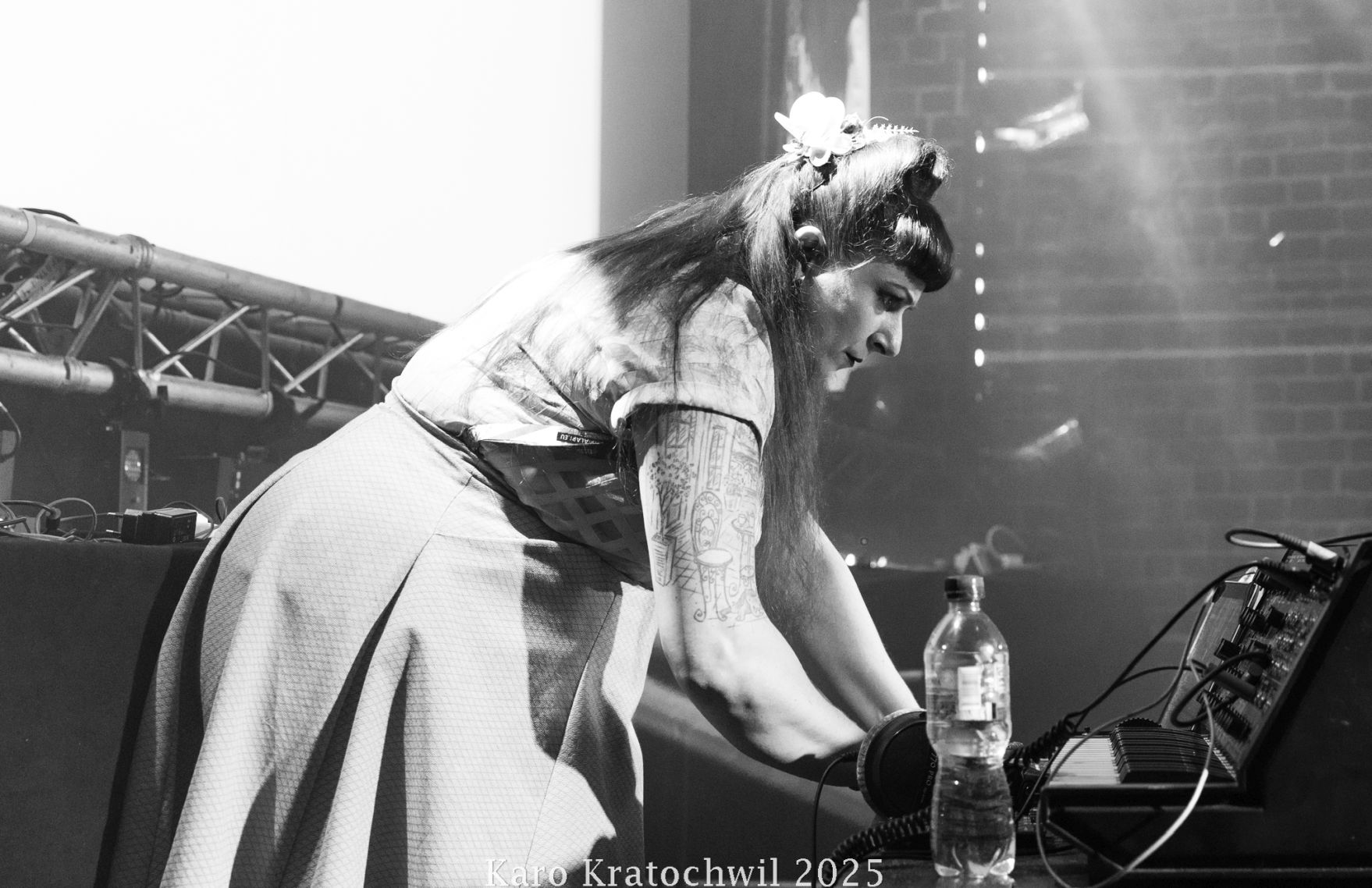
THOROFON’s performances remind me what industrial music can still be: provocative, elegant, human. They don’t imitate power; they are power, redefined through precision and purpose. Their sound doesn’t just echo through the hall - it rewires it. As the last frequencies faded, what lingered was more than applause - it was admiration. The kind that comes when you witness something perfectly aligned: form, sound, and presence fused into one coherent force.
Setlist
01. Impro 1
02. Maggothill
03. Buried on dead grounds
04. Dis/k.o
05. Impro 2
06. Stop thinking/start seeing
07. Antisavak
08. Lingua franca
09. Knochentanz
10. Be/at/zero
11. Impro 3
12. Soldier’s duty
Portion Control
Pioneers of industrial and electronic body music, PORTION CONTROL emerged in London in 1979. The duo’s minimal yet ferocious approach to rhythm, sample manipulation, and vocal distortion laid the foundations for acts like FRONT 242 and SKINNY PUPPY. Blending experimental Electronics with raw physical power, they continue to evolve with unbroken intensity - proving that innovation and aggression can coexist in perfect symmetry.
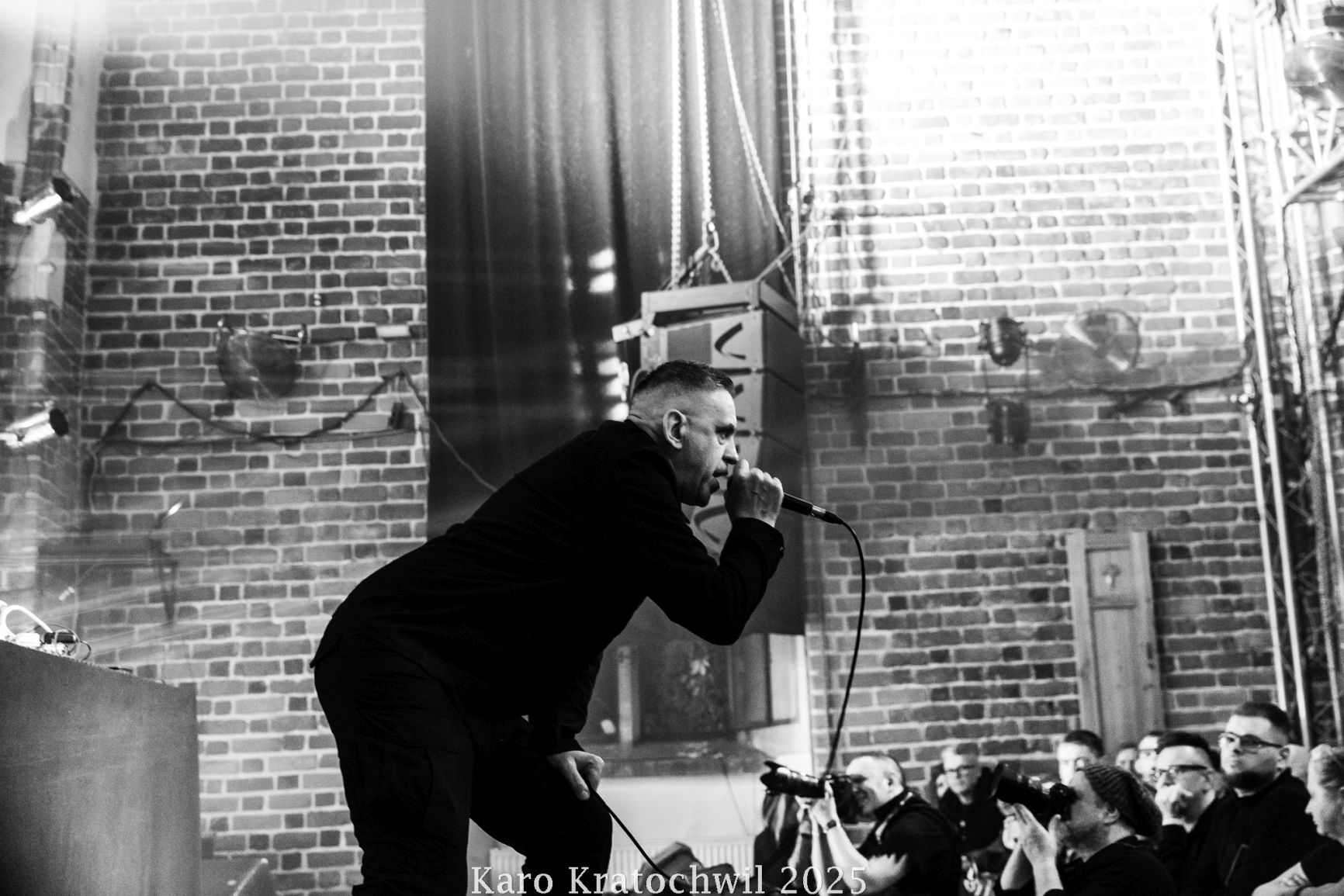
Music & Performance
This music hit hard. There’s something so pure, so beautifully brutal about PORTION CONTROL, that rare blend of precision and ferocity that only true pioneers can deliver. When they took over the stage, it felt like being plugged directly into the raw circuitry of electronic history. Every pulse, every distortion came with purpose. Listening to them live, I could instantly hear the echoes of every project they’ve inspired - from the sharp-edged vocal style to the grinding, unmistakably British rhythm architecture that defined an entire generation of industrial and EBM acts. But PORTION CONTROL remain unmatched.

Their sound hasn’t aged; it’s evolved, refined, sharpened to a surgical edge. The set was a pure adrenaline surge, minimal, physical, and alive. The bass wasn’t just sound; it was substance, moving through the body like voltage. Vocals cut through with clarity and intent, commanding and urgent, but never hollow. It was a brilliant concert - honest, powerful, and deeply physical. PORTION CONTROL don’t just play music; they remind you why you ever fell in love with this scene in the first place. A true sonic punch and one that still leaves my pulse racing.
All Pictures by Karo Kratochwil







